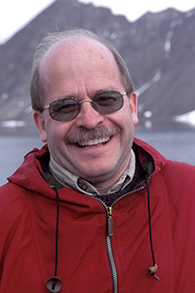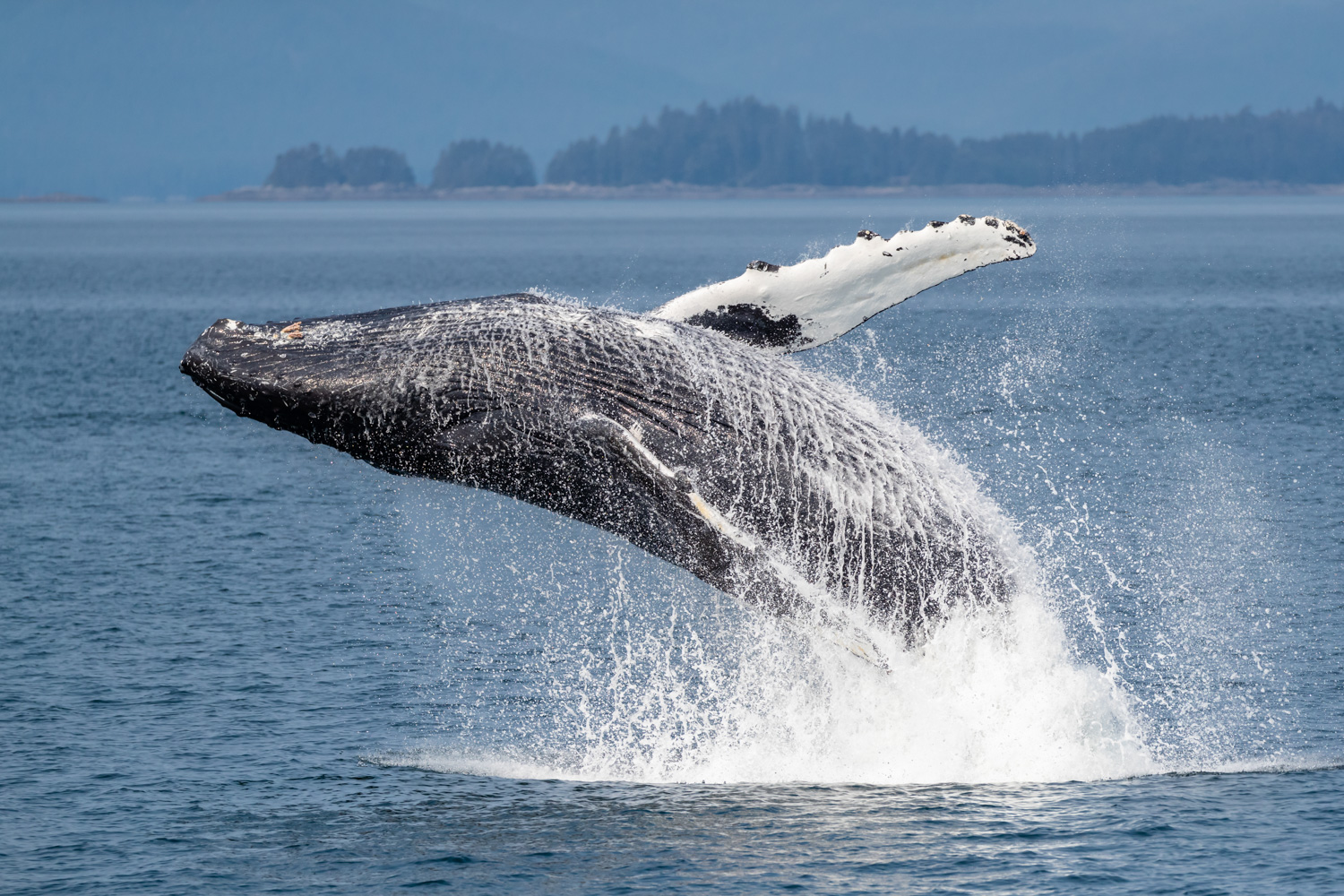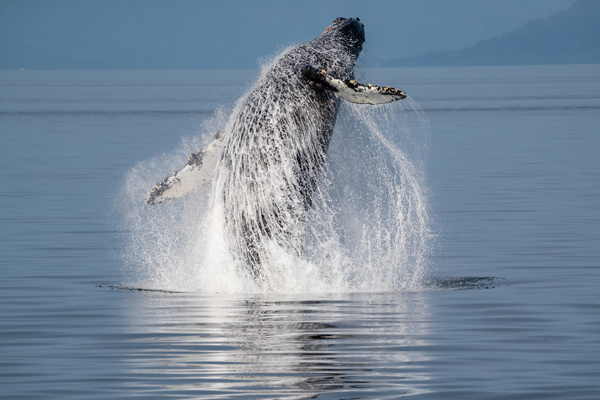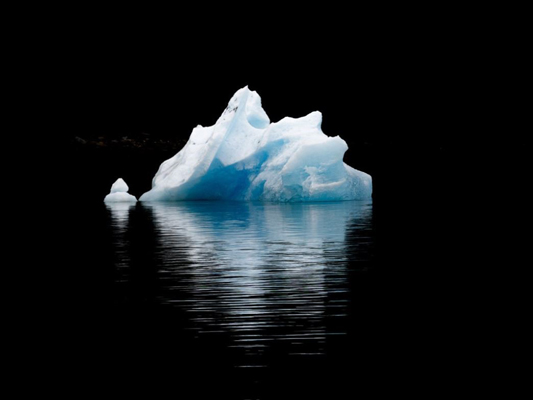No matter how many documentaries you have seen on TV, nothing prepares you for seeing, more than a million pounds of bubble-netting whales rise from the depths, swallow ten thousand gallons of water, and God knows how many thousands of fish, right in front of you. In a matter of 30 seconds, the leviathans slowly sink back into the abyss. By the time the ripples of the retreating whales have vanished from the water’s surface the only remaining evidence that it happened is the strong stench of whale breath in the air, the photos you just snapped, and memories that will last a lifetime.
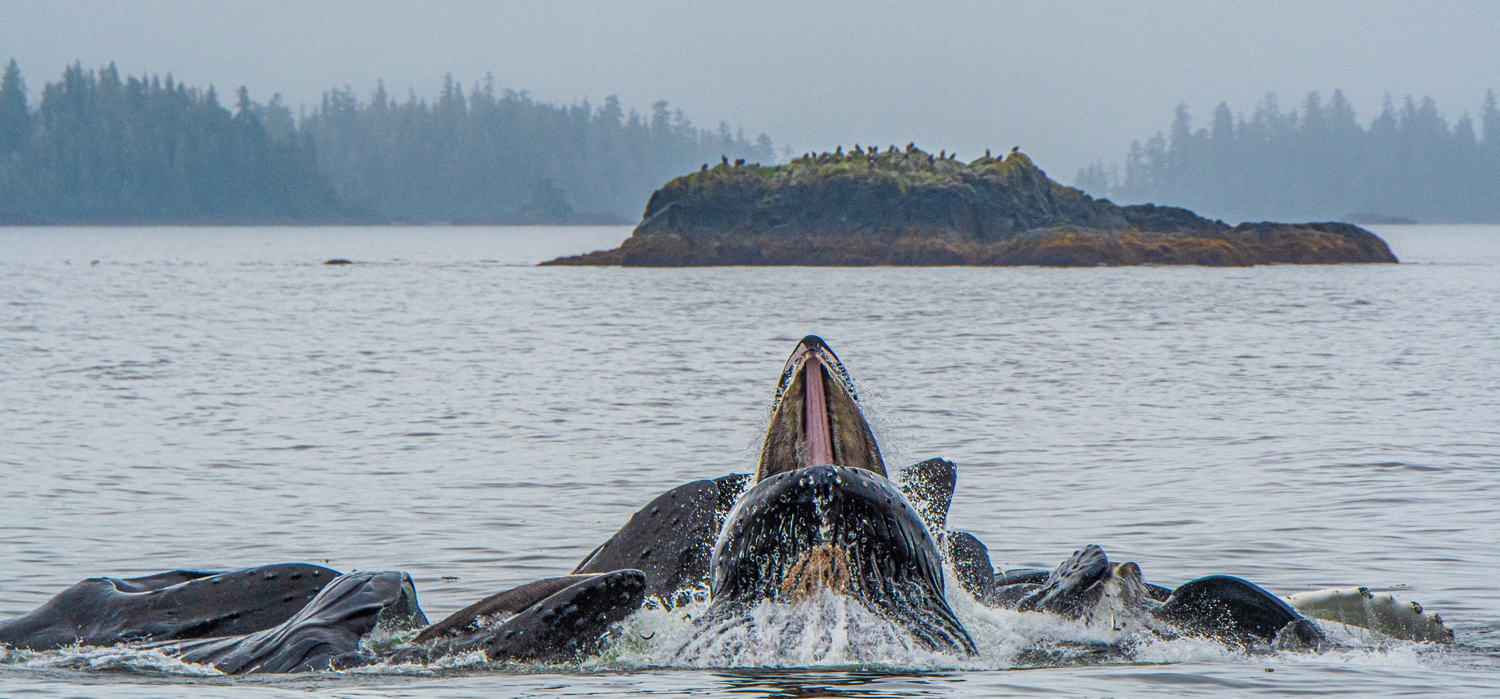
The distribution and abundance of whale foods not only impact the whale’s behavior but also our photographic opportunities. If whale foods are dispersed and not abundant then the humpbacks tend to feed alone, often far from each other, making it harder to locate them and nearly impossible to photograph their rarer types of behavior. However, when fish, like herring, concentrate into dense schools, humpbacks start concentrating into pods and work cooperatively to improve their success at catching these fish by bubble-net feeding.
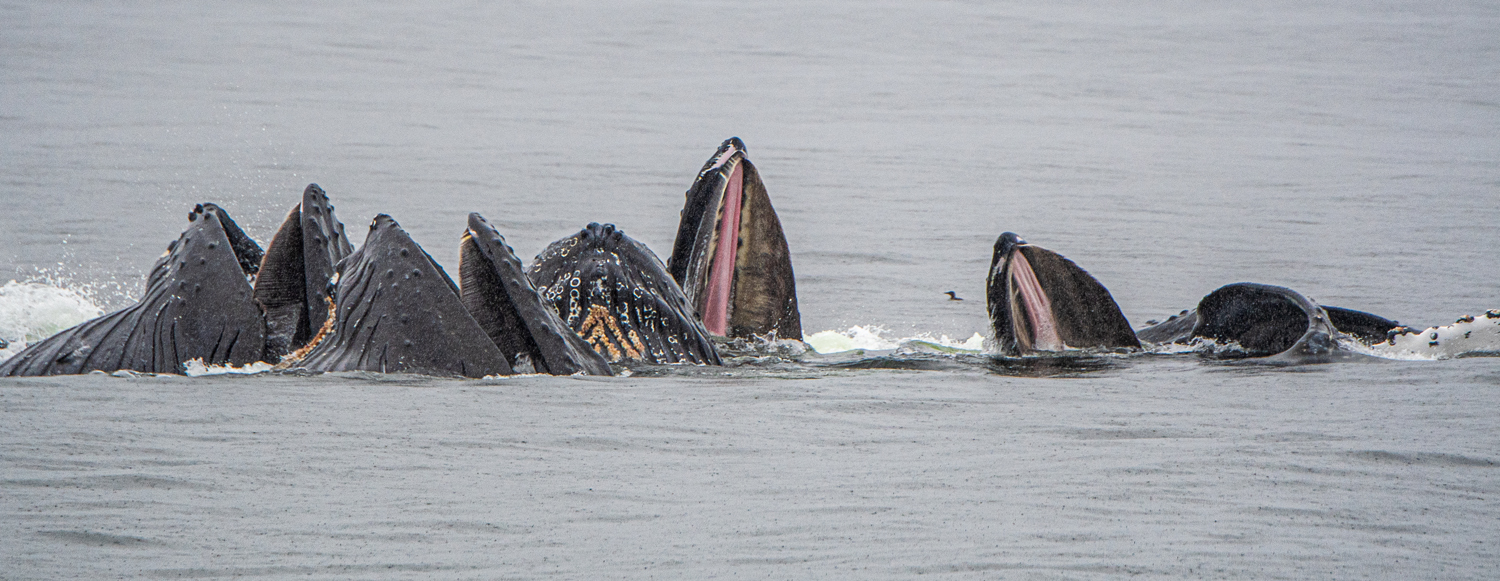
When bubble-net feeding, a group of up to 20 whales will hunt cooperatively to corral and consume large quantities of small fish, like herring. They dive deep below dense schools, swim in a tight circle while releasing air from their blow holes. The released air rises rapidly in the water and forms a curtain of bubbles, which scares the small fish toward the center of the circle near the surface. Right when the fish are most concentrated, the entire pod of whales rise, open their mouths wide, with adjacent whales almost touching, and engulf much of the water, and many of the fish in a matter of seconds. Studies have indicated that individual adult whales are engulfing about 500 gallons of water and about 100 pounds of fish per bubble-net episode.
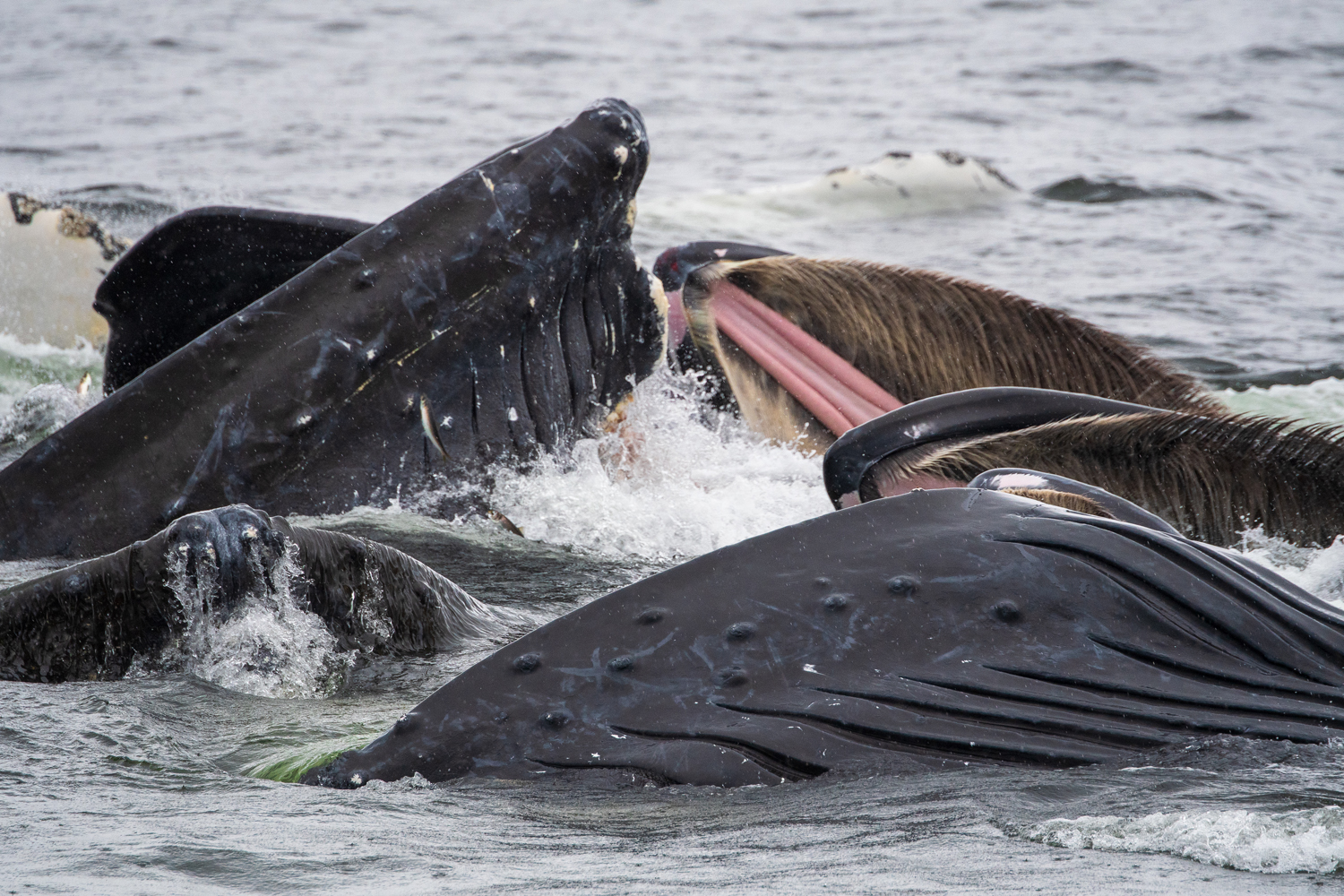
This change in whale feeding strategy, from solitary to cooperative bubble-netting, does not only improve their fishing success, it also improves the quantity and quality of photo opportunities for us as well. When whales concentrate, start feeding in pods instead of individually, they are much easier to locate and provide far more interesting photos. With larger numbers of whales concentrated in smaller areas, photographers have a greater probability to find and photograph whales breeching, tail-slapping, pectoral fin-slapping, and other types of behavior that are not as common. When fish concentrate, whales concentrate, and that is when things really get interesting. That is precisely why we lead humpback whale photo safaris to Frederick Sound and Chatham Strait in southeast Alaska each summer when herring are most abundant. Because that is where and when you have the greatest probability to capture quality images of some of the most amazing humpback whale behavior in the world.
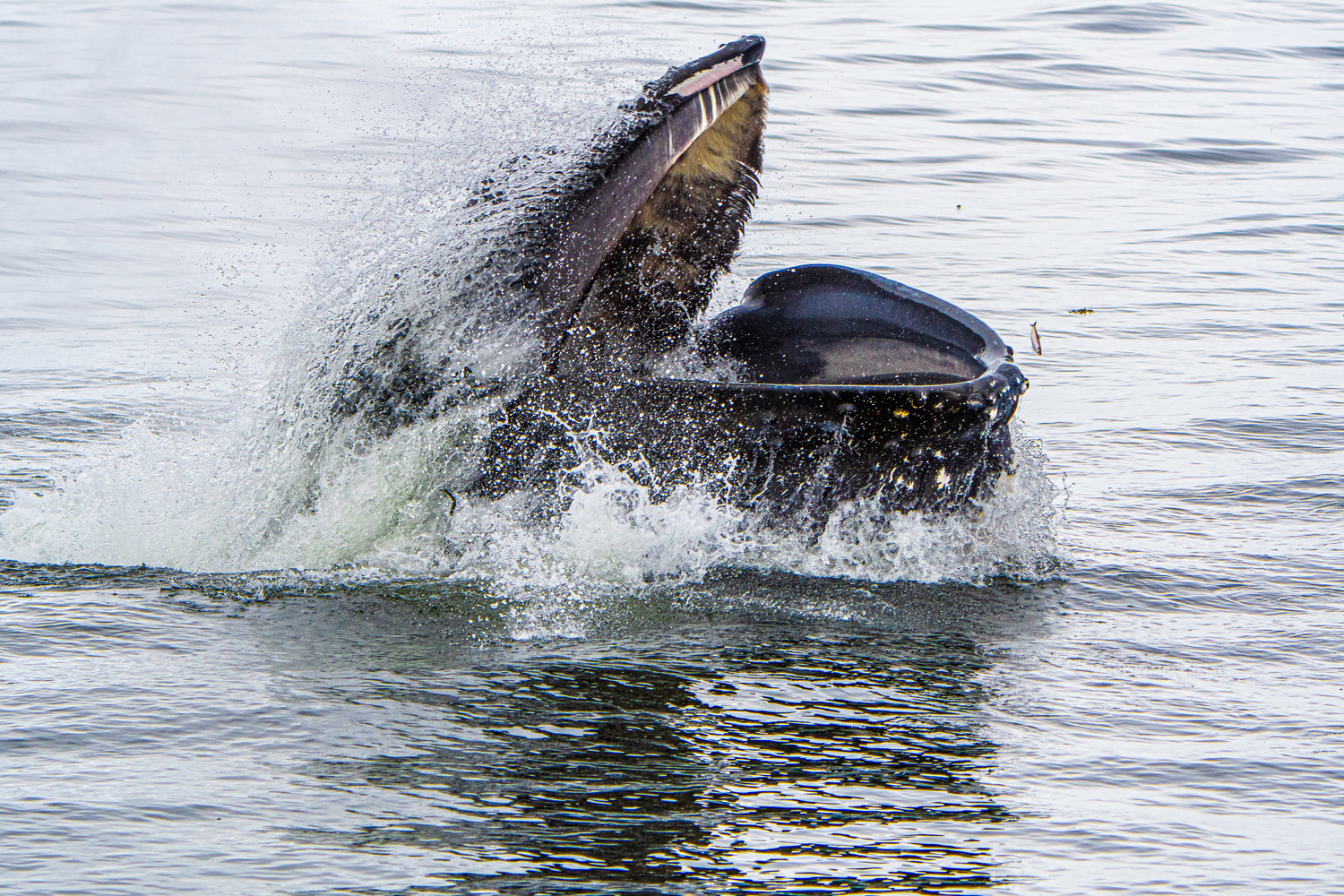
One of my most memorable events of this trip, that generated a lot of photos and excitement, occurred when about 20 humpback whales, at the end of their synchronized bubble-net feeding exercise, rose out of the ocean right in front of our boat–some less than 50 feet away! We were photographing from the bow and whales were emerging from the right, the left and directly in front of us. I focused on one of them that was closest to me with its head slightly above the surface of the ocean and with a pool of sea water, that probably consisted of at least several hundred gallons, trapped in its partially open mouth. Just as the whale was closing his mouth, I watched in amazement, as a single tiny herring jumped out of the whale’s mouth and back into the ocean! At that moment I wondered how many of his brethren were heading on a different path, on a long and winding dark journey that would transform them all into a very small part of a very large whale.
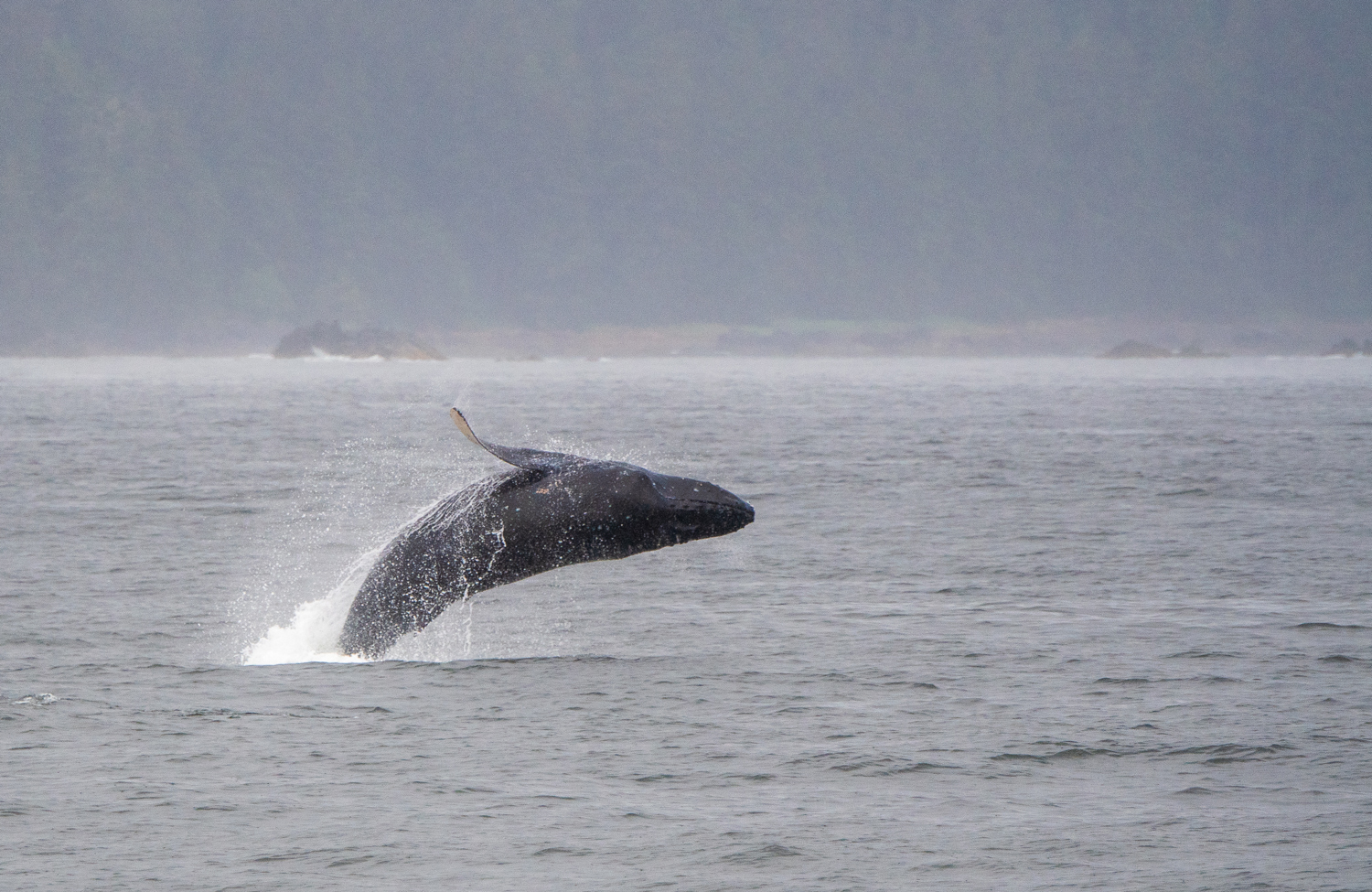
What about the whale’s perspective? Eating tons, literally, of live little herring is just one way these big guys make a living. But, when they are feeding on herring, how many does it take to feed a hungry humpback? According to the National Oceanic and Atmospheric Administration (NOAA) a typical humpback whale eats between 4,000 and 5,000 pounds of fish per day (while feeding on fish). Pacific herring average about 0.6 pounds each. So, we might expect one “average” whale to eat about 7,500 Pacific herring per day. Or, in our case, where we had 20 humpback whales feeding together, we might expect this group to eat approximately 90,000 pounds of herring per day which would consist of approximately 150,000 individual herring fish per day. That’s a lot of fish!
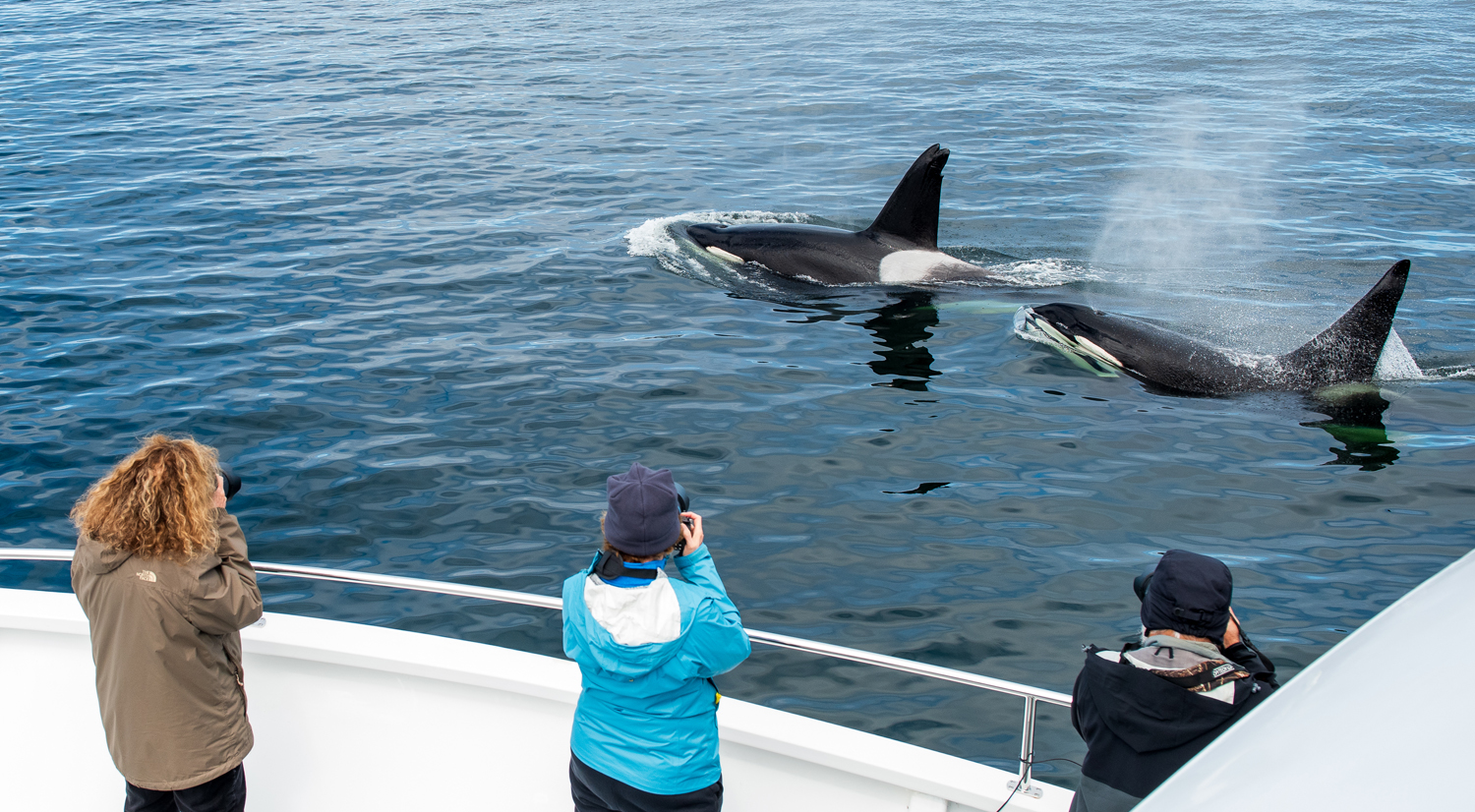
Humpbacks weren’t the only whales that entertained us and provided excellent photography. Orcas also provided plenty of photographic opportunities on this tour. There was a lot of rapid-fire image-taking when their dorsal fins would protrude above the water, but particularly when they would breech, slap their tails, or spy hop—a vertical rise out of the water performed to view the surroundings. One orca had what appeared to be a long string of kelp wrapped around its tail that was very visible while it was slapping away.
We spent quite a bit of time taking photos of individuals and pods of orcas. Some traveled with us along shorelines for extended periods. Sometimes they even appeared to be attracted to the boat. They just showed up and “entertained” us with their antics of leaping out of the water, spy hopping or occasionally just acting curious and hanging around. We were able to observe and photograph major scarring and even dorsal fins and tails with missing pieces. Photographically, our orca highlight occurred when a large male and a smaller one came to the surface, exhaled forcefully, then exposed most of their bodies above water, simultaneously, broadside, within 50 feet of our photographers on the bow. That’s when I think we set our trip record for the most photos taken in less than 30 seconds!
On one occasion a pod of five orcas rapidly approached a mother and calf humpback whale and intermingled with them briefly. Seeing that made some of us concerned for the safety of the calf, but the orcas soon moved off and the calf remained unharmed, at least as long as we observed that humpback family.
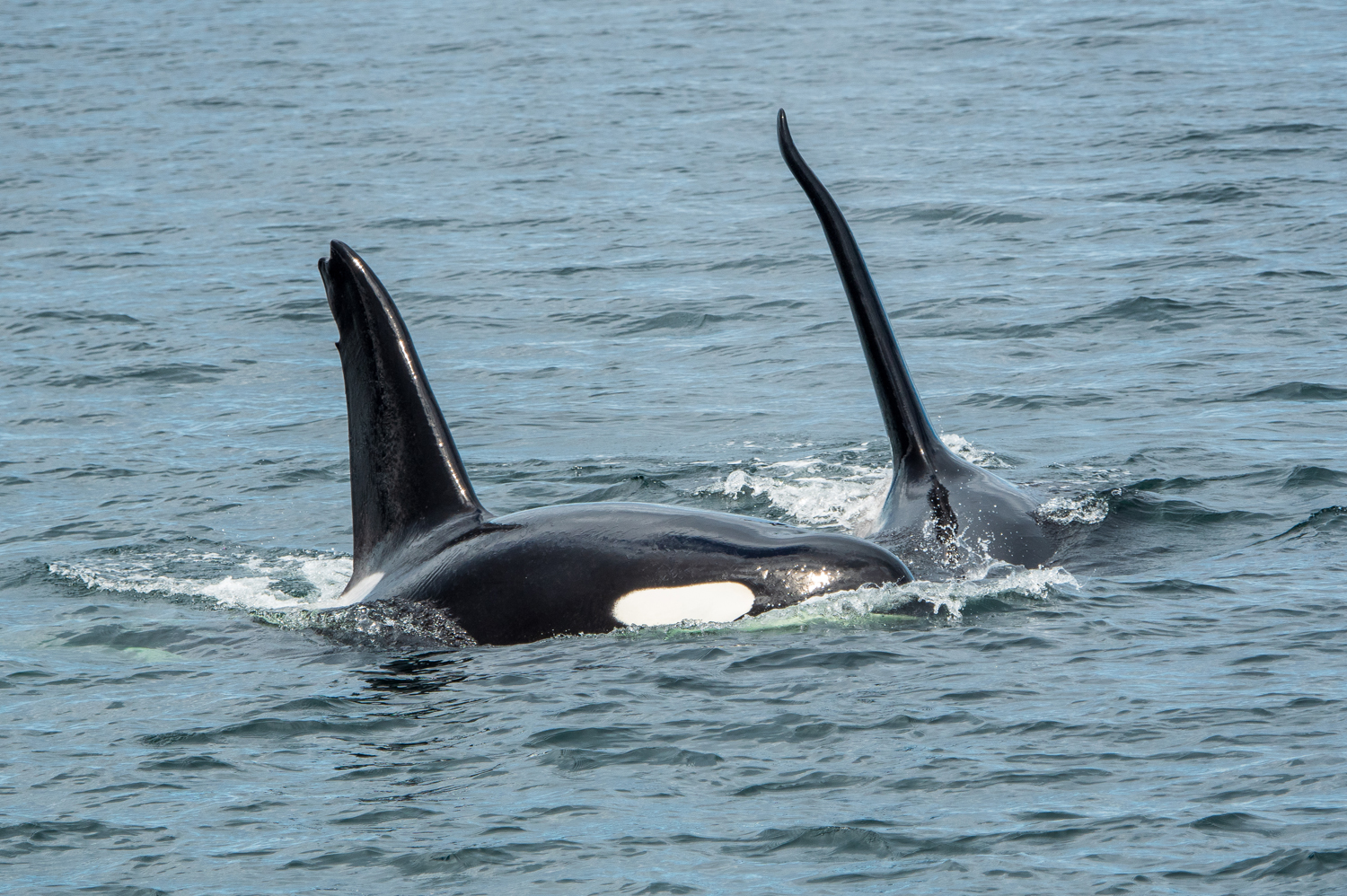
But a subsequent orca encounter that we witnessed with a different species was less innocent, providing a rare window into the darker side of orca behavior. We noticed an orca carrying an adult harbor seal in its mouth, like a toy. To our surprise, the harbor seal was still alive and initially looked to be unharmed. However, when the orca released the seal at the surface, it appeared stunned and did not attempt to escape, though it was able to stay upright and was breathing. Then the orca began slapping it extremely hard with its tail, pick it up using its mouth, carry it for a while and then pass it to another orca. This behavior was repeated over and over for an hour or so and remarkably the harbor seal was still alive. It was like watching an aquatic version of a cat, or group of cats, playing with a captured mouse. Then, after about an hour, the pod of whales completely changed the rules and tore the harbor seal to bits and ate it very rapidly.
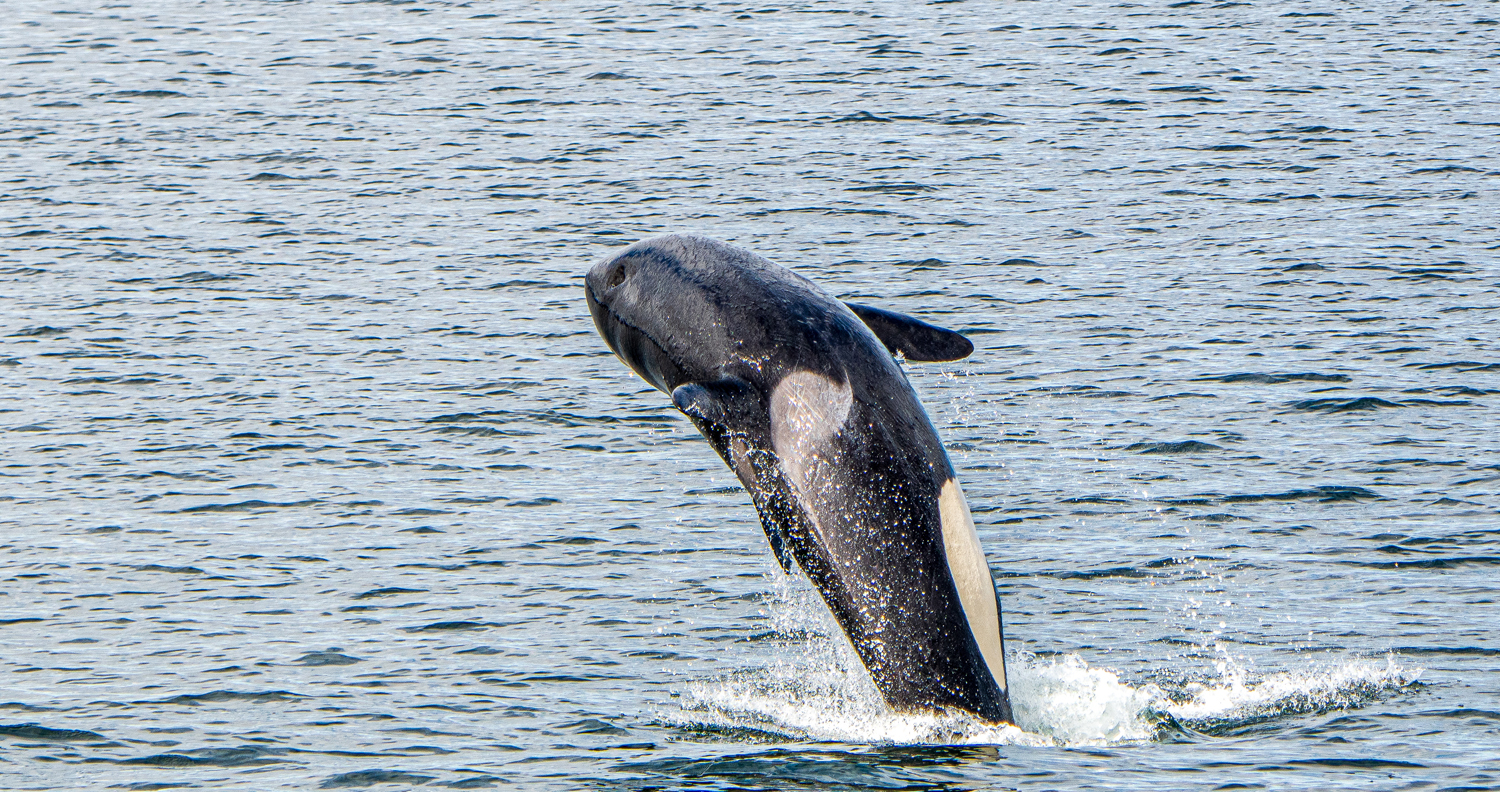
Watching wildlife photographers on the bow of the boat trying to photograph breeching whales is a form of entertainment itself. It resembles the quick-draw contests of dueling cowboys on those old western movies. People get jittery. You never quite know when or where the breech might happen, but if you didn’t locate, focus and get the shot off within two seconds of when the whale breaks the surface, then don’t bother—you’re too late—by then all you capture is a huge splash from where the whale had been. Don’t fret about missing the shot, you may even hear a chorus of expletives from others who had tried and failed. To get a great image of a humpback at the peak of its breech is a very challenging photographic exercise but rewarding when you finally pull it off!
In the final hours of our tour, while cruising back to Petersburg, we had a wonderful photo opportunity with an adult bald eagle perched on a beautiful small floating iceberg in Leconte Bay. The captain slowly moved our boat in closer and we were able to get full-frame photos with our telephotos, then it offered us another round of amazing opportunities when it leaped from the iceberg, sending ice chips flying from its extended talons, and flying away.
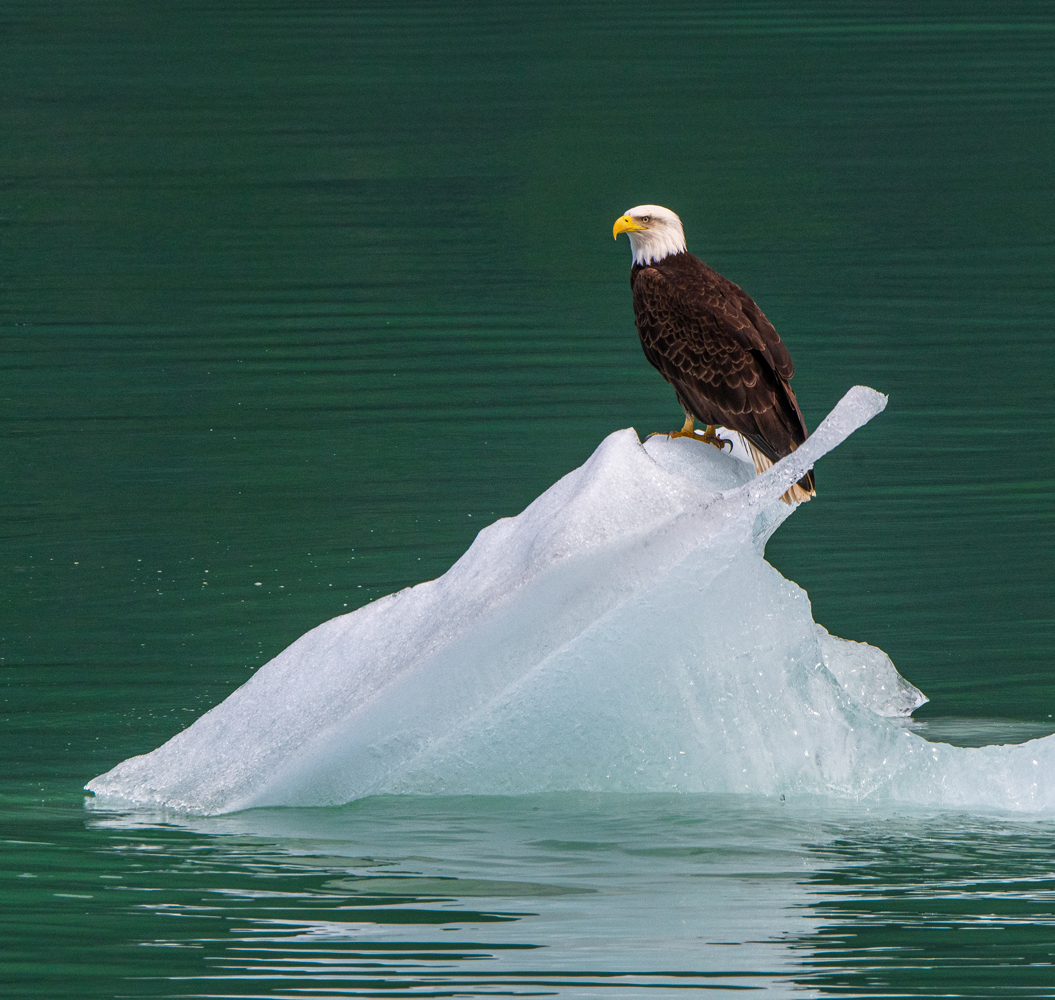
Thinking that was the final opportunity of the trip, some of us started to put away our gear then, to our amazement, the eagle flew several hundred yards and landed on the most beautiful piece of floating ice you could ever hope for. The mass of ice the eagle perched on looked like something a person had created in an ice-sculpturing contest. Of all the places that eagle could have flown, this was the best—as if it were a model shoot. Again, the captain moved in slowly and we all had amazing opportunities to photograph this beautiful bird on a scene you could only dream about. What a wonderful way to finish our wonderful tour.
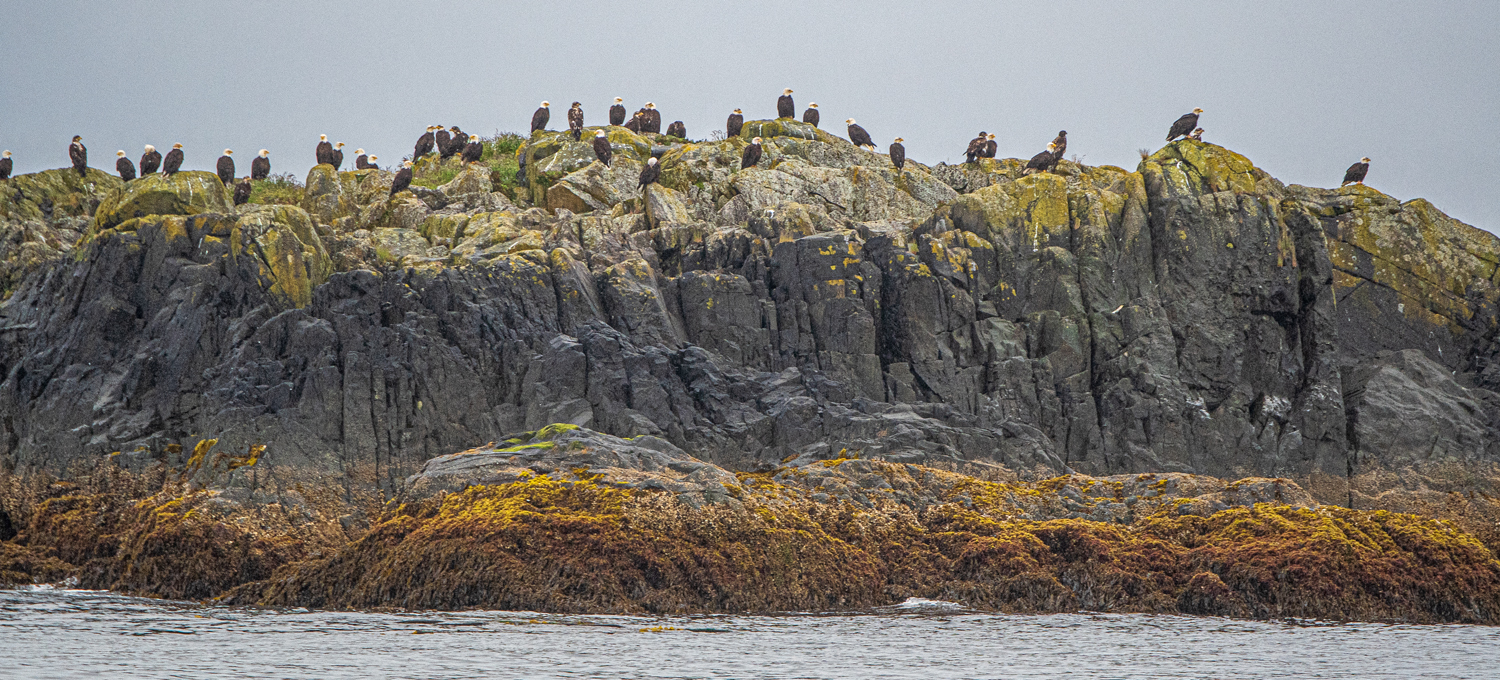
This was a really great tour—comfortable boat, very competent and congenial staff, and some of the most fantastic food I have ever eaten on a photo trip—including fresh crab and shrimp that we caught ourselves! There was a lot of interesting animal behavior, stunning scenery and wildlife photographic opportunities. If you like the serenity of the Alaska wilderness, and you like to get up close and personal with some of the world’s largest mammals, than this trip is for you. I can’t wait to return. I am scheduled to lead my next whale tour to this same destination next summer, June 24-July 3, 2024. I hope you can join me. See you in Petersburg!

